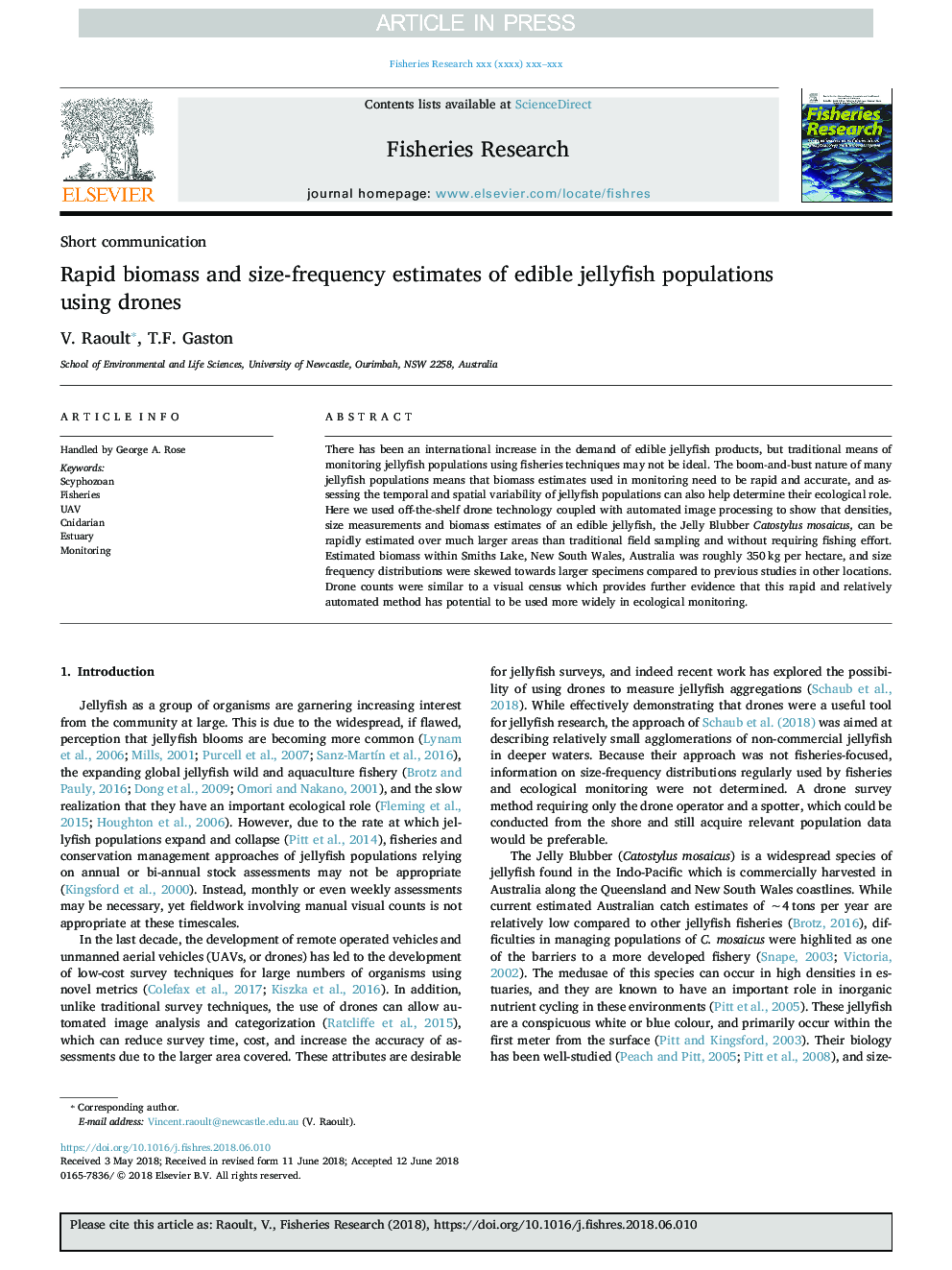| Article ID | Journal | Published Year | Pages | File Type |
|---|---|---|---|---|
| 8885243 | Fisheries Research | 2018 | 5 Pages |
Abstract
There has been an international increase in the demand of edible jellyfish products, but traditional means of monitoring jellyfish populations using fisheries techniques may not be ideal. The boom-and-bust nature of many jellyfish populations means that biomass estimates used in monitoring need to be rapid and accurate, and assessing the temporal and spatial variability of jellyfish populations can also help determine their ecological role. Here we used off-the-shelf drone technology coupled with automated image processing to show that densities, size measurements and biomass estimates of an edible jellyfish, the Jelly Blubber Catostylus mosaicus, can be rapidly estimated over much larger areas than traditional field sampling and without requiring fishing effort. Estimated biomass within Smiths Lake, New South Wales, Australia was roughly 350â¯kg per hectare, and size frequency distributions were skewed towards larger specimens compared to previous studies in other locations. Drone counts were similar to a visual census which provides further evidence that this rapid and relatively automated method has potential to be used more widely in ecological monitoring.
Related Topics
Life Sciences
Agricultural and Biological Sciences
Aquatic Science
Authors
V. Raoult, T.F. Gaston,
